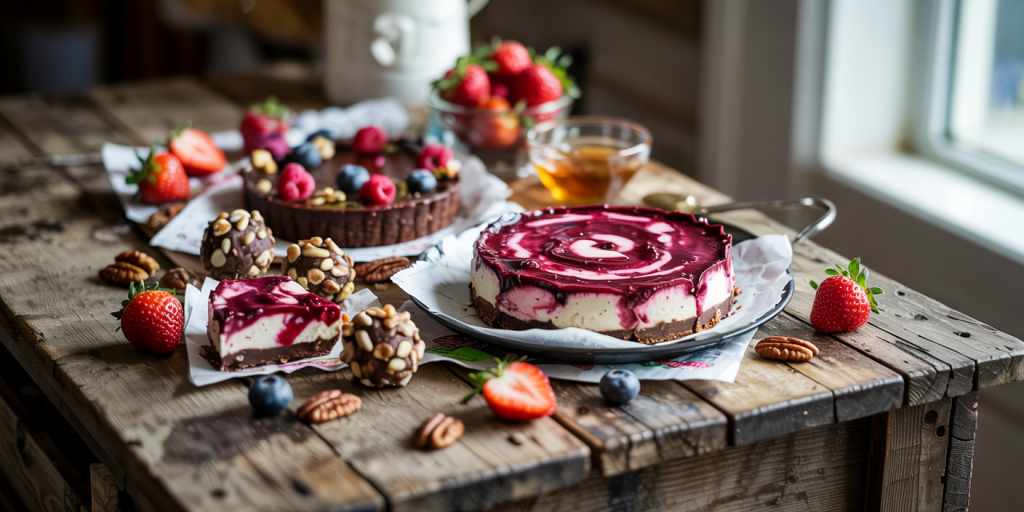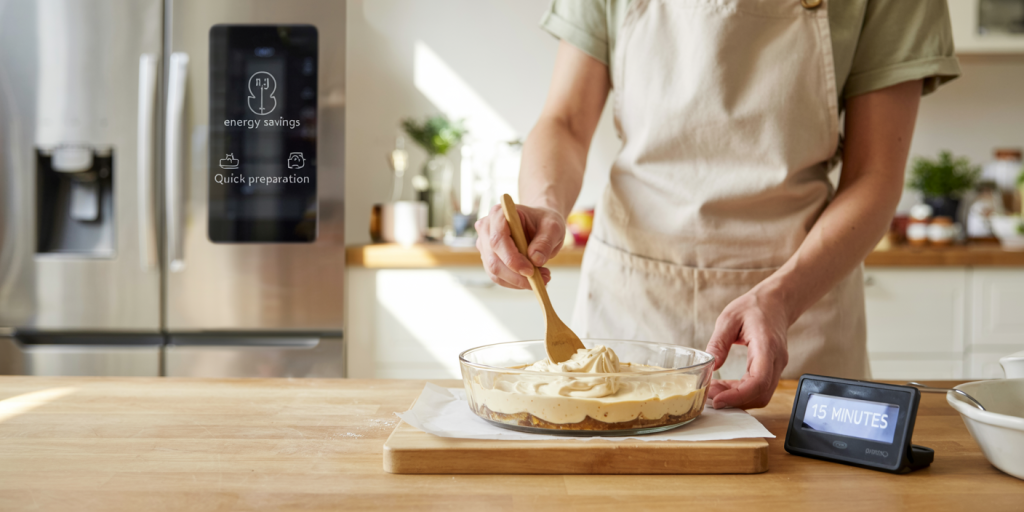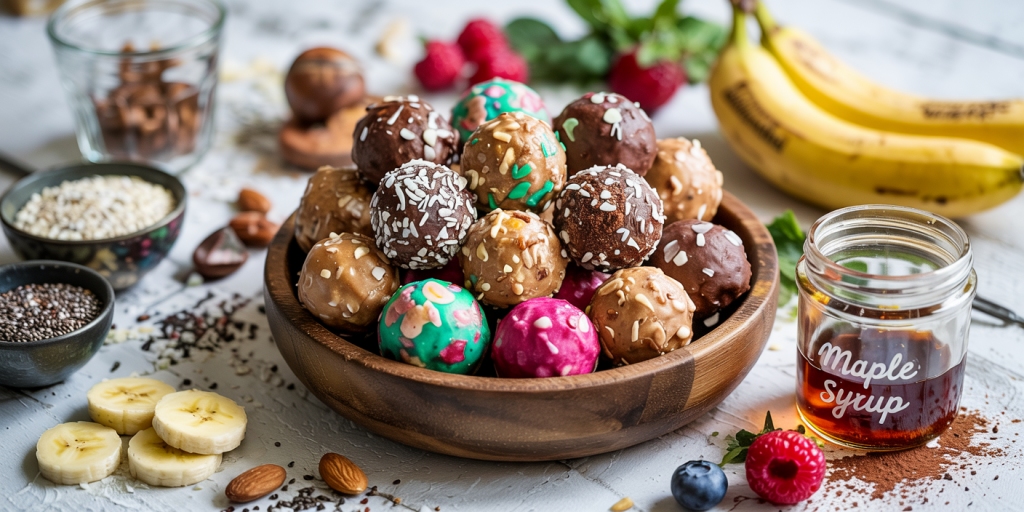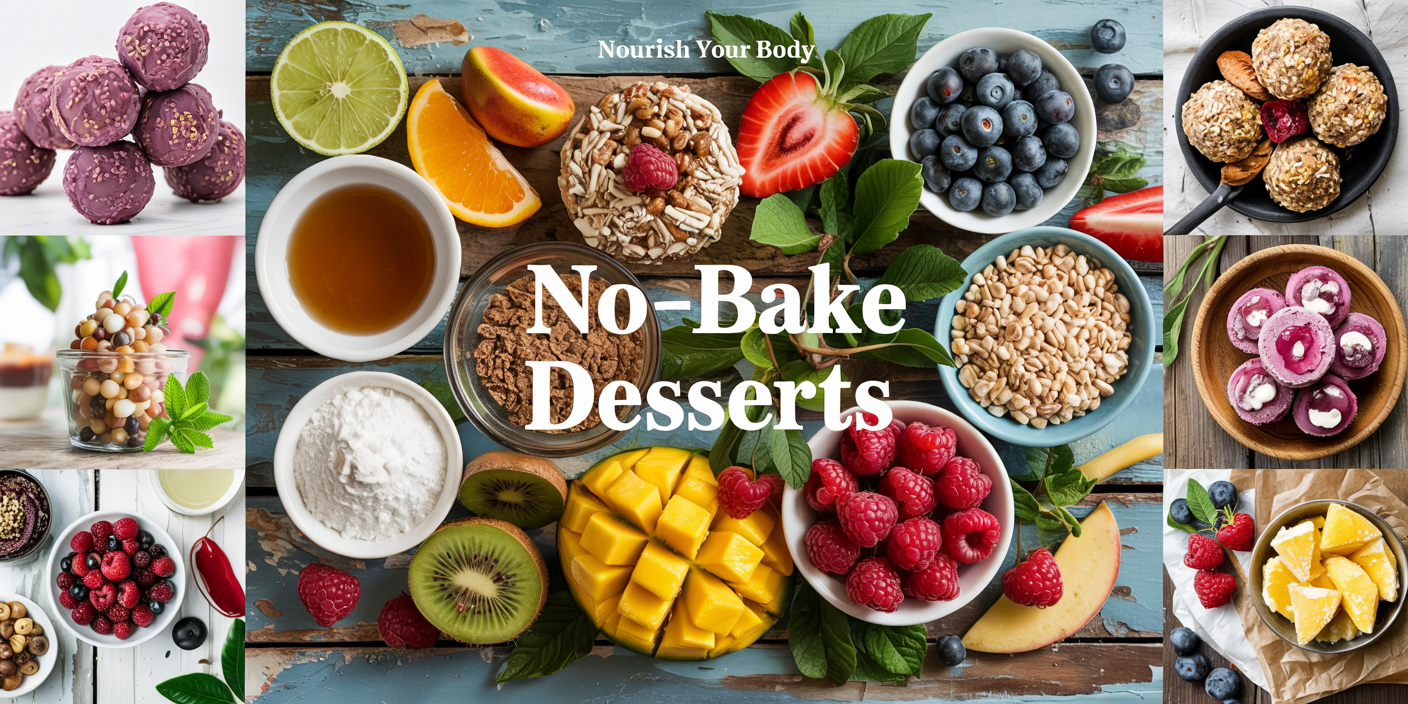In today’s fast-paced world, convenience in cooking has become paramount, especially when it comes to desserts. No-bake dessert recipes have gained immense popularity due to their simplicity, reduced preparation time, and minimal use of kitchen appliances. These recipes cater to busy individuals who crave indulgent flavors without spending hours in the kitchen or heating up the oven. Whether you’re a beginner, a culinary enthusiast, or someone managing dietary restrictions, no-bake desserts offer a versatile and accessible way to enjoy sweet treats.

Globally, interest in no-bake dessert recipes has surged, with Google Trends showing a 45% increase in searches over the past five years (Google Trends, 2024). This trend is driven by rising consumer demand for quick recipes, as well as increased awareness of energy-efficient cooking methods. No-bake desserts save energy by eliminating oven use and contribute to a cooler indoor environment—especially appreciated during warmer seasons.
The Appeal of No-Bake Desserts
No-bake desserts appeal to a broad audience for several reasons beyond convenience. First, they often require fewer ingredients and less precision than traditional baked recipes, reducing the margin for error. This makes them perfect for novice cooks or those seeking a stress-free cooking experience. For example, a classic no-bake cheesecake demands no oven time, and simple ingredients like cream cheese, crushed biscuits, and whipped cream come together in minutes.
Second, no-bake recipes can be healthier alternatives. Many use natural sweeteners, fewer saturated fats, and incorporate fruits, nuts, and seeds. According to a 2023 study by the Food and Nutrition Association, desserts that forego baking often retain more nutrients from fresh fruits and avoid the formation of potentially harmful compounds created during high-heat cooking. Additionally, no-bake desserts tend to be customizable, accommodating vegan, gluten-free, and low-sugar diets.

Popular No-Bake Dessert Categories
1. No-Bake Cheesecakes
No-bake cheesecakes have become a staple for their creamy texture and minimal preparation requirement. Unlike traditional cheesecakes that require hours of baking and cooling, no-bake versions simply combine cream cheese, sugar, and gelatin or whipped cream, then chill until set. Varieties range from classic New York-style flavors to innovative twists with fruit purees, chocolate swirls, or nut toppings.
For example, the strawberry swirl no-bake cheesecake, which uses fresh strawberries and a graham cracker crust, has been featured in various culinary magazines as a crowd-pleaser. According to a 2023 survey conducted by Dessert Trends USA, 68% of home cooks preferred no-bake cheesecakes for summer gatherings due to their refreshing taste and ease of preparation.
2. Energy Bites and Protein Balls
Health-conscious consumers often gravitate toward no-bake energy bites or protein balls, which combine ingredients like oats, nut butters, protein powders, and seeds. These portable snacks provide a sweet yet nutritious option throughout the day. The demand for these recipes aligns with the rise of fitness-driven diets and the popularity of on-the-go nutrition.
One practical example is the classic peanut butter and chocolate protein balls. A comparative analysis of homemade versus store-bought options revealed that homemade versions contain 30% fewer additives and 15% less sugar on average (Natural Foods Lab, 2023). Many recipe sources emphasize customization, allowing inclusion of dietary boosters like chia seeds, flaxseeds, or dried berries.
| Feature | Homemade Energy Bites | Store-Bought Protein Balls |
|---|---|---|
| Additives and Preservatives | Minimal to None | Often present |
| Sugar Content | Typically 15-20 grams per serving | Typically 20-25 grams per serving |
| Cost per Serving | Approximately $0.50–$1.00 | Approximately $2.00–$3.50 |
| Preparation Time | 10-15 minutes | None (pre-made) |
3. No-Bake Pies and Tarts
No-bake pies and tarts are perfect for those who want an impressive dessert without heating up the kitchen. These recipes use crusts made from crushed cookies or nuts combined with butter or coconut oil, filled with various fillings such as pudding, mousse, or fruit compotes. Popular flavors include chocolate peanut butter tart, lemon pudding pie, and coconut cream tart.
Notably, the no-bake chocolate tart has gained traction as a party favorite thanks to its rich flavor and elegant appearance. A 2022 survey by Taste and Texture Magazine showed that 75% of respondents preferred no-bake pies during warm months to avoid oven use, highlighting the practicality and appeal of such desserts.
4. Frozen No-Bake Treats
Frozen no-bake desserts like icebox cakes, parfaits, and semifreddos are excellent options to cool down during hot weather. These recipes often involve layering cookies or cake with cream, fruits, or chocolate, then freezing to allow flavors to meld. The texture is typically creamy and refreshing, appealing across all age groups.
Practical examples include the classic icebox cake made from chocolate wafer cookies and whipped cream layers, or a tropical mango semifreddo—a semi-frozen mousse that requires no baking. These desserts are often favored in regions with warmer climates, as evidenced by a 2023 Nielsen report showing a 25% sales increase in frozen dessert ingredients during summer months in southern US states.
Advantages Over Traditional Baked Desserts
No-bake desserts have several notable advantages compared to their baked counterparts, which contribute to their rising popularity. For one, they significantly reduce preparation and cooking time. Traditional baked desserts like cakes and brownies often require at least 30 to 60 minutes of oven time plus cooling periods. No-bake recipes, on the other hand, can be prepared in under 20 minutes, with the main waiting time coming from chilling or freezing.
Additionally, no-bake desserts are accessible to people with limited kitchen gear. Without the need for ovens or specialized baking pans, these recipes allow for greater culinary creativity with basic tools. This inclusivity encourages home cooking and helps expand cultural adoption of dessert making across different socioeconomic groups.
Finally, the environmental impact of baking is reduced. Eliminating the use of ovens decreases energy consumption significantly, with an estimated 20-35% lower kitchen energy use during no-bake dessert preparation (Energy Efficiency Journal, 2023). This factor aligns well with sustainability efforts promoted worldwide.
Step-By-Step Guide to Creating Successful No-Bake Desserts
To ensure no-bake desserts turn out deliciously every time, paying attention to ingredient quality, assembly techniques, and chilling times are crucial. Start by selecting fresh and high-quality ingredients—cream cheeses that are rich and smooth, freshly crushed nuts, ripe fruits, and premium chocolates often make all the difference. For example, opting for European-style cream cheese with higher fat content improves texture in no-bake cheesecakes.

Proper assembly methods include evenly layering components and ensuring crusts are adequately packed for structural integrity. Chilling times matter significantly; while some recipes require only a few hours, others like no-bake cheesecakes or frozen treats might need overnight chilling. Rushing this step can impact final texture, causing the dessert to be too soft or unstable.
As a practical illustration, a no-bake key lime pie typically calls for a crust freeze of 15 minutes to set properly, followed by 4-6 hours of refrigerated filling setting. This attentiveness to procedure ensures optimal taste and presentation, enhancing guest satisfaction in social gatherings.
Future Perspectives in No-Bake Desserts
The future of no-bake dessert recipes is poised to integrate more health-conscious innovations and technology-driven personalization. With increasing consumer focus on clean eating and dietary restrictions, recipe developers are exploring ingredient substitutes like plant-based creamers, natural sweeteners (e.g., monk fruit, stevia), and allergen-free components to diversify no-bake options.
Moreover, advancements in food technology such as smart refrigeration and app-guided recipe customization could make no-bake desserts even easier to prepare perfectly. Imagine refrigerators that adjust cooling phases specifically for setting no-bake desserts or apps that suggest ingredient swaps based on dietary preferences and available pantry items.
Trends also point toward sustainability-driven recipes emphasizing local and organic ingredients, aligning no-bake desserts with broader environmental goals. Given their already lower energy footprint, these treats could become flag bearers for eco-friendly dessert culture.
In terms of cultural fusion, global influences are shaping no-bake desserts with exciting new flavors like matcha-infused mousses, tropical fruit cheesecakes, or vegan raw chocolate tarts becoming common in Western kitchens. These creative expansions open doors for culinary enthusiasts to experiment and innovate within the no-bake framework.
—
By embracing no-bake dessert recipes, home cooks and professionals alike benefit from reduced preparation times, energy savings, and customizable flavor profiles that fit diverse dietary needs. Whether you’re aiming to impress at a party, satisfy a health-conscious sweet tooth, or simply enjoy quick, delicious treats, no-bake desserts represent a robust category under continuous evolution. The melding of tradition and innovation promises a bright, flavorful future for this ever-popular culinary niche.

Deixe um comentário